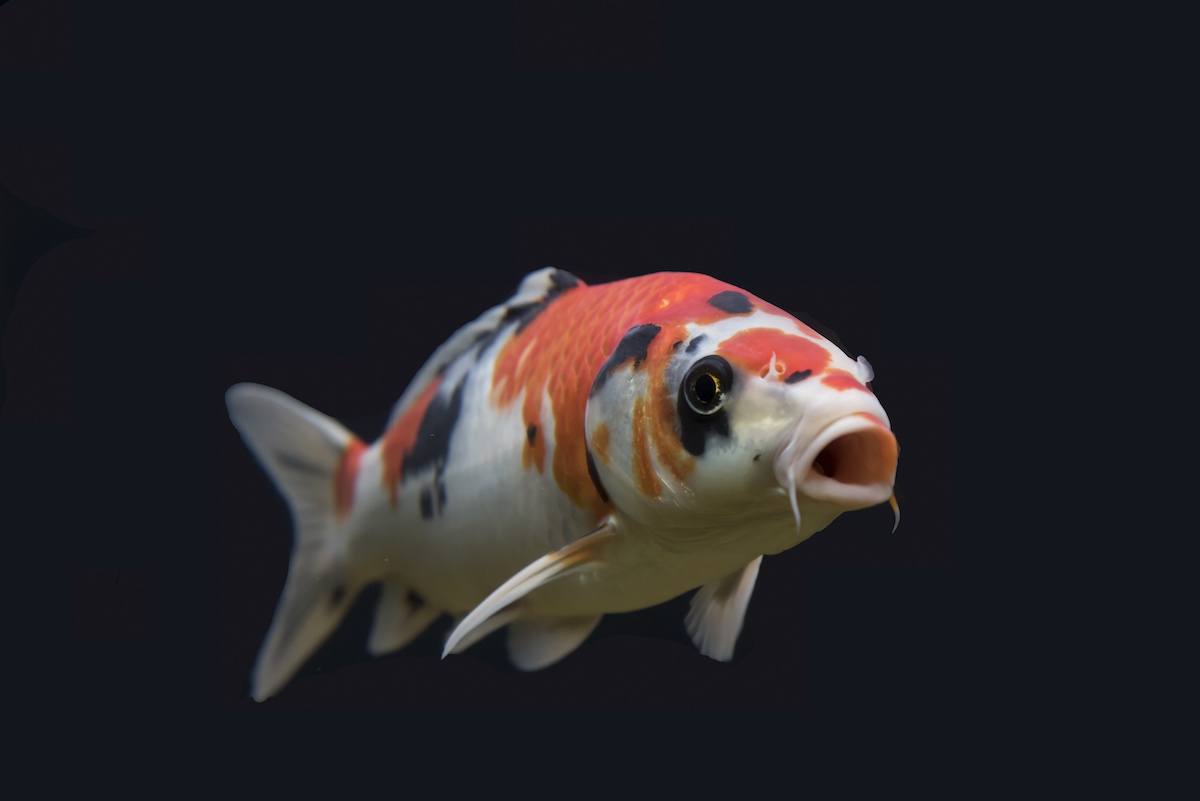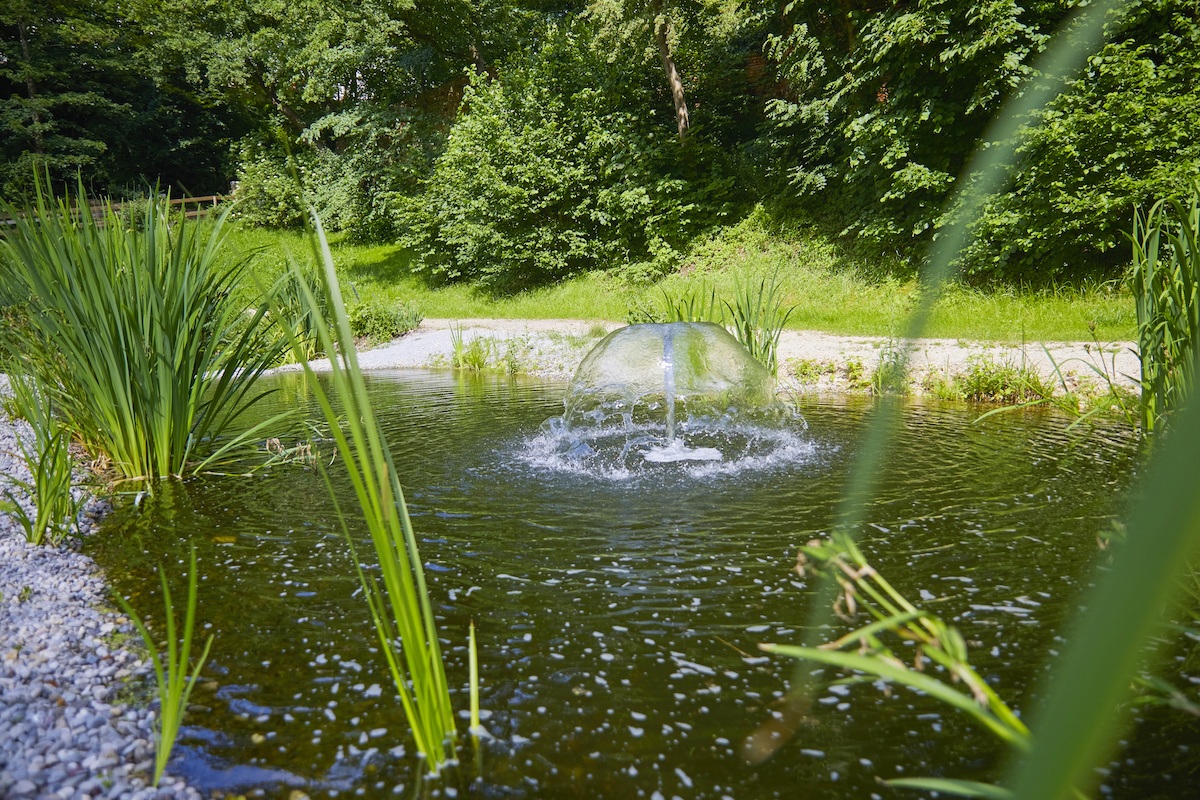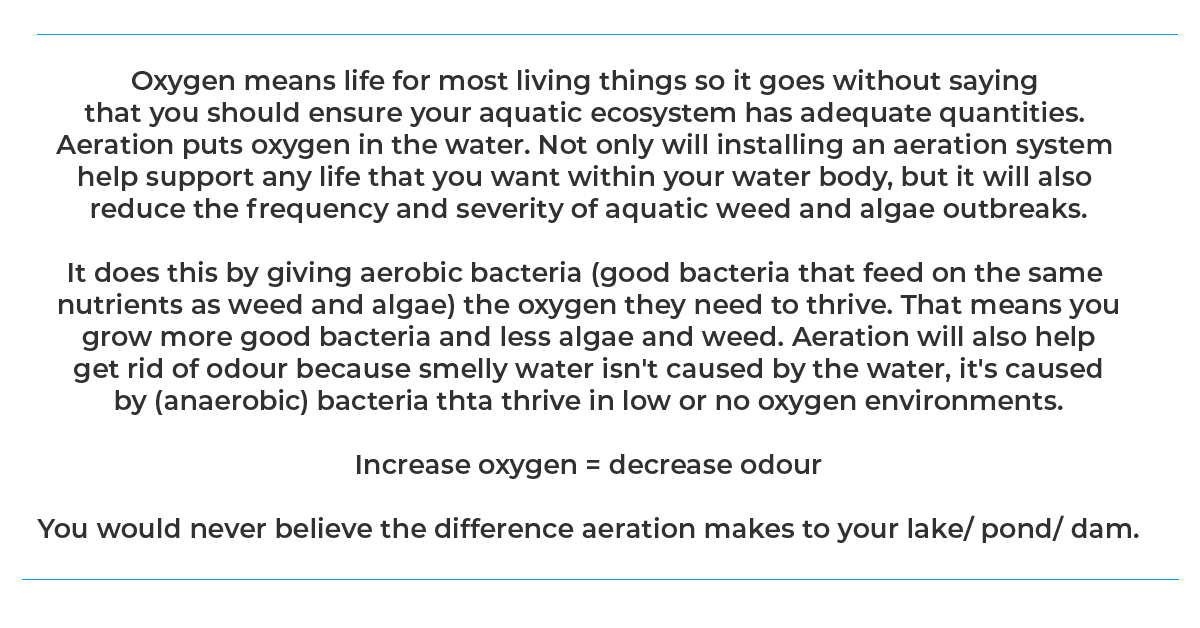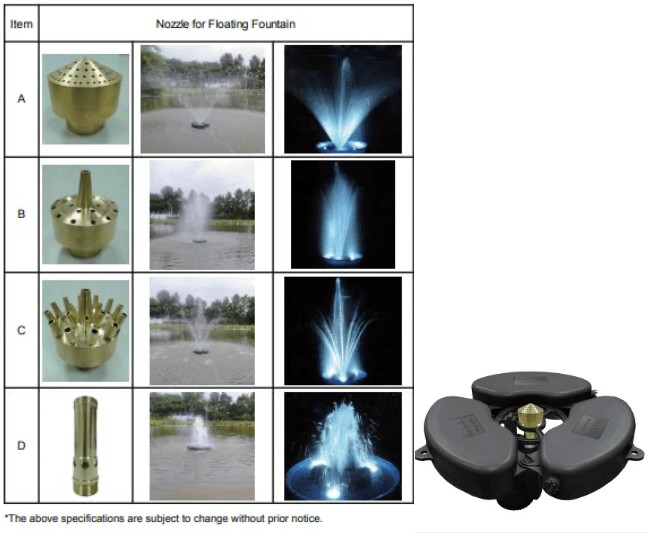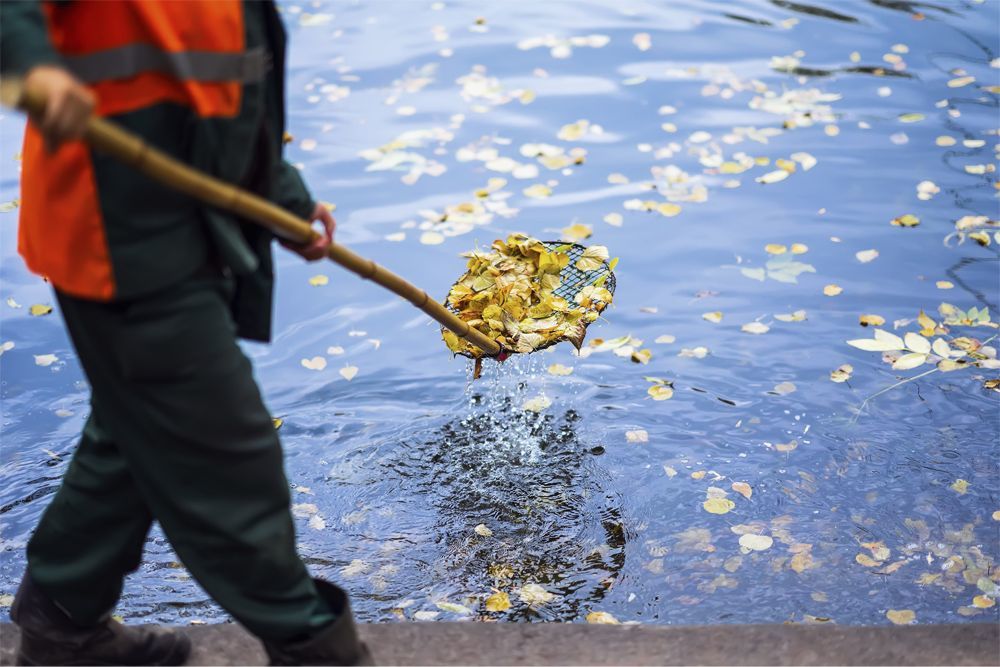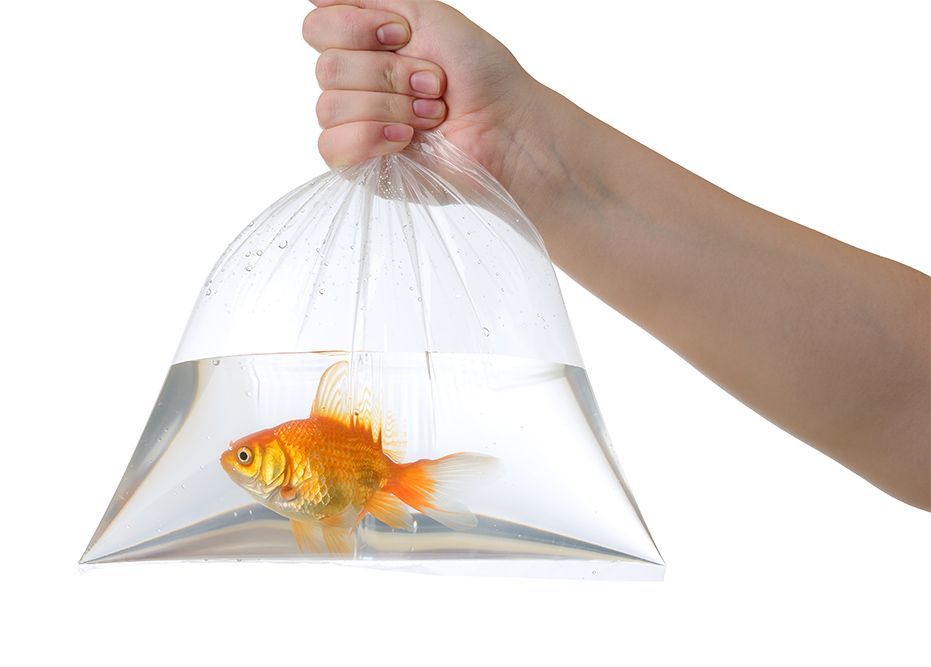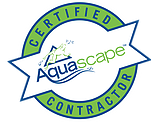What is the right filtration for my pond?
This can be one of the most significant purchases for a pond and the most important thing for your ponds health (and your sanity). If you are thinking of building a pond taking the time to understand what filters do and which one is right for you might be the difference between a successful low maintenance pond and a constant headache.
So filters have four main jobs in our eyes (and the fourth is redundant if you nail the first three!)
Firstly you need to have an effective mechanical filter.
Mechanical filtration catches the solid particles. It can be a sponge, specialised koi filter matting, vortex chamber filters, skimmer boxes, rotating drums that self-clean, or a myriad of other fancy devices.
As long as it catches the particles!
There is a very fine balancing act here between premium performance and the amount of maintenance required (or $ spent). An ultra-fine mechanical filter (like filter wool for your aquarium).
Finer sponge filters catch every particle leaving very clear water – but will need lots of maintenance – sometimes 3-4 times a day.
Alternatively, you can have a very open weave matting that only catches the largest or particles and requires very little maintenance.

The best-case scenario is to have multiple layers. One very open weave, then a finer one, then finer again. Bingo! Super clear water and minimal maintenance – so how do you do it without these types of complicated, ugly filters? Read on for how we do it in our pond builds or contact us for a personal recommendation.


Unfortunately clear water can be a silent killer as it can be full of nutrients invisible to the eye. Because of this a filter has to do more than catch the particles.
Secondly, you need to remove the nutrients.
So how do you remove the nutrients? Well, this is two parts – the first is the Nitrogen Cycle – breaking down and detoxifying the leftover fish food, fish waste, leaves and decaying organic matter (the sum total of which is called detritus).
Aerobic beneficial bacteria break down this detritus into ammonia, nitrite and nitrate. They like a good supply of oxygen-rich water full of nutrients. They then do their job – but they are a fussy bunch and do not like to be disturbed. Cleaning the filter media that the beneficial bacteria grow on can completely kill your filter for 30 days or more. This can have catastrophic results for your fish and the pond in general. There are two ways to fix this – one is to have separate mechanical and biological filters (very easy to do) – the other is to set up a system that only cleans with pond water – and we have a wide range of filters that can do that.
This detoxifying biological filter needs to be sized to the water volume and the amount of waste produced. Obviously a pond of 3000 Litres with 10 fish will need a different filter to a pond of 3000 litres with 50 fish so we would encourage you to get in contact us for a personalised recommendation.
Click here to contact us for more information.
The bacteria that break down the ammonia and nitrite (which is the deadly stuff) require oxygen to do their job, so it is a good idea to pair this filter with a skimmer to get the oxygen-rich water or to add an additional aerator to your pond system.
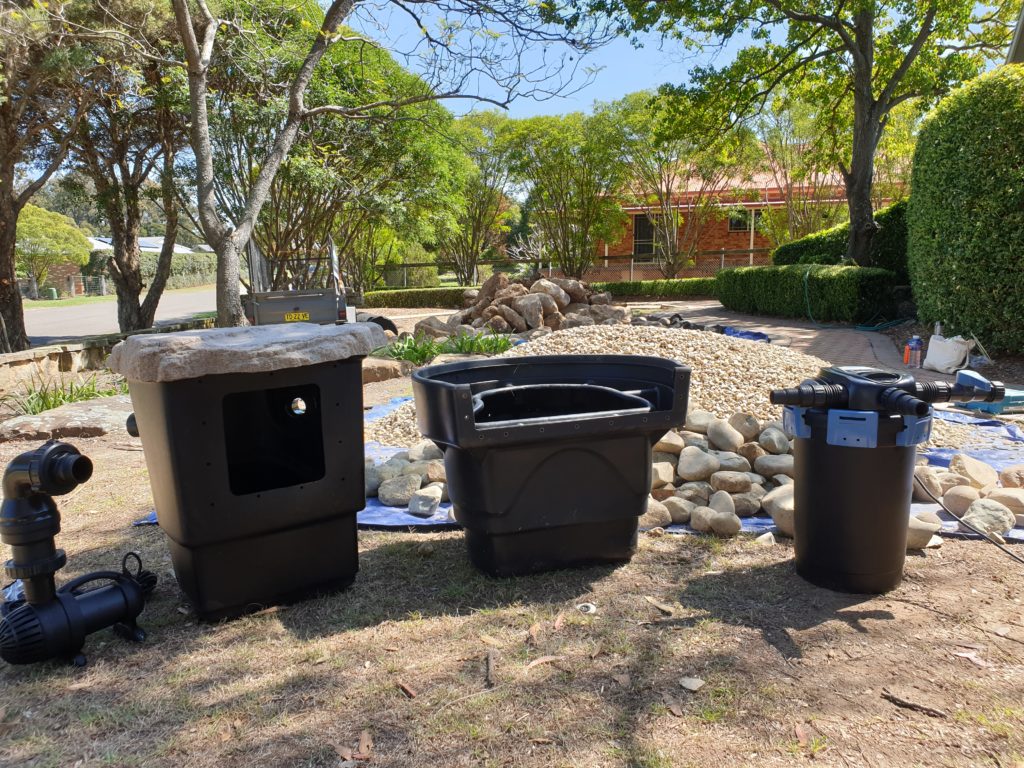
This combination pictured above works very effectively. It is one of the professional systems we install on our koi ponds. The skimmer catches the large particles and delivers oxygen-rich water to the pressure filter which traps the medium-sized particles, kills single-celled algae with the built-in UV, and is easy to backwash; then it goes through the larger biological filter which polishes the water and has a much larger biological surface area and aquatic plant tray for removing nitrates and phosphates.
By separating things in stages like this, this system is super easy to maintain and very low maintenance but can handle a very high stocking load. It also offers a measure of redundancy by having more than one filter. And the best part is they integrate into the landscape so you don’t even see them- but are still easy to service. A perfect example is the below set up from one of our own builds.

Sometimes we need to resort to different systems because of pump limitations, and this is one of the professional systems for ponds using a pool pump.

And we want to keep it fairly simple – no one wants one of these!

Thirdly you need to break down the nitrates and remove the phosphates.
The removing of nitrates is actually a different bacteria again, and they like to have a slower flow of water that is devoid of oxygen. This can be challenging to achieve and quite often requires a very large filter for this to be effective.
A porous volcanic stone is quite often the best way to cultivate these bacteria in small quantities as the porous area inside the stone makes the perfect environment for the slower flow.
There are a few things to look out for here before you rush off to grab 50 bags of volcanic stone. While these bacteria like a slower oxygen-deprived area to grow in, creating spaces that are too deep without water movement and oxygen can lead to sulphur producing bacteria which can lead to fish deaths.
The volcanic stone also has a habit of compacting over time and catching debris particles between the stones which can be counterproductive.
Getting confusing, right? You need oxygen-rich water for the aerobic bacteria, oxygen-depleted water for the anaerobic, different flow rates for each bacteria type. You can grow deadly gas-producing bacteria if you get it wrong. So how do we do it in our systems so effectively
Well – The three filter system we pictured before is one way. A lot of the aerobic bacteria live in the first filter and need the faster flow of water as it spins around in the canister. If these bacteria are doing their job, the water that feeds into the larger biological filter will now be ready for the anaerobic bacteria to do their job. These guys get the ideal conditions by spreading the filter media out over a larger area (which gives them a slower flow of water) and by putting them in a bag we can periodically clean out any debris to keep them at their optimal performance. This generally also forms the start of the waterfalls, which puts the oxygen back into the water to keep this cycle going.
Clever right?
How can we create the same filtration on a larger scale; for larger ponds, dams, or even lakes.
We use an Eco-System approach; by using rock and gravel in our construction, we create a massive surface area that is perfect for cultivating the right amount of bacteria. We have taken Mother Nature’s ideas and refined her design into the ideal Wetland Filter.
A wetland filter can be custom built to fit into any sized area and to whatever size is required (depending on the pond size).
https://anythingwet.com.au/product/wetland-filter-kit-2-5m-x-3m-x-1-2m/
The wetland is an intelligent system that has a false floor for easy cleaning and even dispersion of the water flow into the entire filter. There are then several layers of different gravel grades which gradually separate out the particles in sections (so it doesn’t clog up).
It has aerobic bacteria living in the bottom area where the water comes in, and anaerobic in the top layers of finer gravel where the water has already been through the other aerobic areas. By using the different grades, we also create the different flow rates required by both different bacteria, and we have an area on the top of the filter that is perfect for growing marginal plants.
The plants that grow in the top of the filter absorb excess nutrients – particularly phosphates.
With this intelligent design we can actually strip out the nutrients faster than they are being produced, so there is nothing for the algae to grow on – this is how we create beautiful natural swimming ponds without chemicals.
The plants that grow in the top can also be edibles for the kitchen or flowering plants that attract other insects which leave larvae in the water. These larvae actually fill in any gaps in the ecosystem and consume anything that hasn’t already been filtered out. They also make tasty snacks for the fish!
We can actually make a pond zero maintenance (almost) by using these principles; building with rock and gravel, using a skimmer, building an intelligent filter system and incorporating enough plants.
Seems too good to be true???? Well, it’s not. We have lots of delighted customers with very low maintenance systems that didn’t believe it could be this effective.
If you are wondering about the scale and how big can they go? Well there isn’t a limit.
Mother nature has been doing this successfully for centuries.



The final piece of the puzzle is algae control/treatment
As I mentioned earlier, this is redundant if we get the filtration right from the beginning. You can see the wetland filter approach removes the nutrients leaving nothing for the algae to grow on but sometimes that isn’t an option and we need to add a Uv light and an Ion Gen and possibly use liquid treatments as well.
Algae comes in three main groups (when looking at how to kill it) Single-celled – Multicelled – and Hybrid varieties.
The single-celled algae can be easily controlled with a UV light. There are a lot of pressure filters that have these integrated into them (like the one we used in combination above) or as separate units for more specific pairing to a particular pond or pump (flow rate is important).
https://anythingwet.com.au/product/ultraklean-3500-pressure-filter/
https://anythingwet.com.au/product/oase-bitron-55/
The multicellular algae (string algae) can be controlled with the ion gen system. The Ion Gen and Uv can be used in combination together for better results.
https://anythingwet.com.au/product/iongen-system-g2/
The Hybrid algae varieties are much more challenging to treat. They generally will require specific treatments designed for individual situations.
Cyanobacteria algae are great examples of mother nature finding a way to adapt to treatments. It is neither a single-celled or a true multicellular algae, and unfortunately, that also makes them harder to deal with in the pond. There are also cyanobacteria’s that combine with diatom algae’s to form a slime in the pond.
This is where the liquid treatments would come in very handy, but we would encourage you to get in touch first. We often need to address the underlying issue first before tackling these algae’s and the right diagnosis and advice is essential here.
When you are trying to maintain the right balance and prevent excess sludge build-up, keep enough beneficial bacteria in the filters, keep phosphates down, clarify those last few rouge particles or just detoxify the town water from topping up, we have a treatment that does all that in one bottle called (wait for it) “Maintain”.
Pretty simple right – everything you could add to maintain your pond in one treatment.
This is also much more effective when dosed regularly, and towards that end, we have a specialised auto doser that can do that automatically for you.
https://anythingwet.com.au/product/automatic-dosing-system-for-ponds/
Talk to us about your next pond and we can incorporate all of these elements into your design to give you an amazing pond that practically looks after itself.


